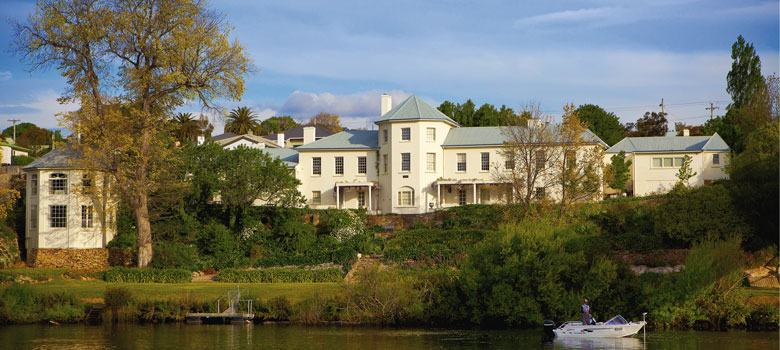
Life
Escape to Simplicity: Derwent Valley
Considering Hobart is one of Australia’s oldest European settlements, it’s no surprise to learn Tasmania was one of the earliest states where vines were planted. This grape flirtation was nevertheless brief after repeated failed efforts fuelled a belief the climate was too cold for producing quality wines. Added to that was the British colonists’ preference for fortified wines.
Of course, had Tasmania been colonised by the French, it’s likely its wine industry would have been established much earlier. French immigrant, Jean Miguet, was the first to identify the similarities with his homeland, prompting him to plant the state’s first vineyard of the modern era near Launceston in 1956.
The second vineyard came two years later when Italian immigrant, Claudio Alcorso, marked a spot at Berriedale in the Derwent Valley, near Hobart. Calling the property Moorilla, an Aboriginal word meaning ‘rock by the water’, the vineyard is now owned by David Walsh, the creator of MONA, which the winery overlooks.
More recently, another Italian immigrant, Stefano Lubiana, recognised the region’s wine growing potential, despite plenty of advice to the contrary.

“We had a lot to prove to the naysayers, so we had to make it work,” says Stefano’s wife, Monique, who moved from Adelaide with her husband in 1990 after the couple bought a 140-hectare block in Granton, 20 kilometres inland from where the Derwent River empties into Storm Bay.
Like Trevor and Pat Hanigan from Derwent Estate up the road, they were attracted by the block’s limestone base and north-facing aspect, and the maritime influence that would hinder frosts.
Like many wine growers in Tasmania, Stefano Lubiana Wines specialises in Pinot Noir and Chardonnay varieties, with 4500 vines per hectare currently under harvest and plans of increasing that to 10,000.
“You need that to be taken seriously as a player internationally. It may not happen this generation, but it will in the next,” explains Monique, whose son Marco is the sixth generation to make wines.
To the manor born

The Derwent Valley is one of Tasmania’s smaller, lesser-known winemaking regions, accounting for just seven per cent of total grape production in the state. Rich in agriculture, it’s historically known for its pastoral and dairying resources. More recently, Australia’s black truffle industry can trace its roots to a pioneering farmer in the valley. And Tasmania’s hops growing industry is now centred in and around the farming community of Bushy Park. Corporate investors have also turned large tracts of grazing land into cherry orchards.
The largest – and oldest – town in the valley is New Norfolk, a 7000-strong community settled in 1805 by evacuees from Norfolk Island after its convict prison was abandoned. This is my base, 40 kilometres from Hobart, in a grand Georgian manor house that would likely be decrepit now had it not been for the intervention of John and Laurelle Grimley.
Built in 1825 as a police constable’s house on the banks of the Derwent River, the building has since functioned as an academy for young gentlemen and as a guesthouse. When the Grimleys first set eyes on it while holidaying in Tasmania in 2002, it had been divided up into barely habitable, low-rent apartment accommodation. After returning a year later, they were delighted to discover it was up for sale and immediately bought it, spending the next three years restoring the building, relaunching it as Tasmania’s only five-star-accredited boutique hotel during the summer of 2006-2007.
Called Woodbridge on the Derwent, and counting itself as a member of the Small Luxury Hotels of the World brand, it contains eight spacious rooms across three levels, each named after a significant historical personality, feature or period in its life. The Pavilion restaurant was added in 2009, drawing architectural inspiration from a 19th-century boating rotunda that hosted a rowing regatta just downriver. Food and beverages are sourced locally whenever possible, with wines cellared in a convict lock-up turned basement room.
To read the full story, pick up the latest issue of Selector Magazine at newsstands from March 7.